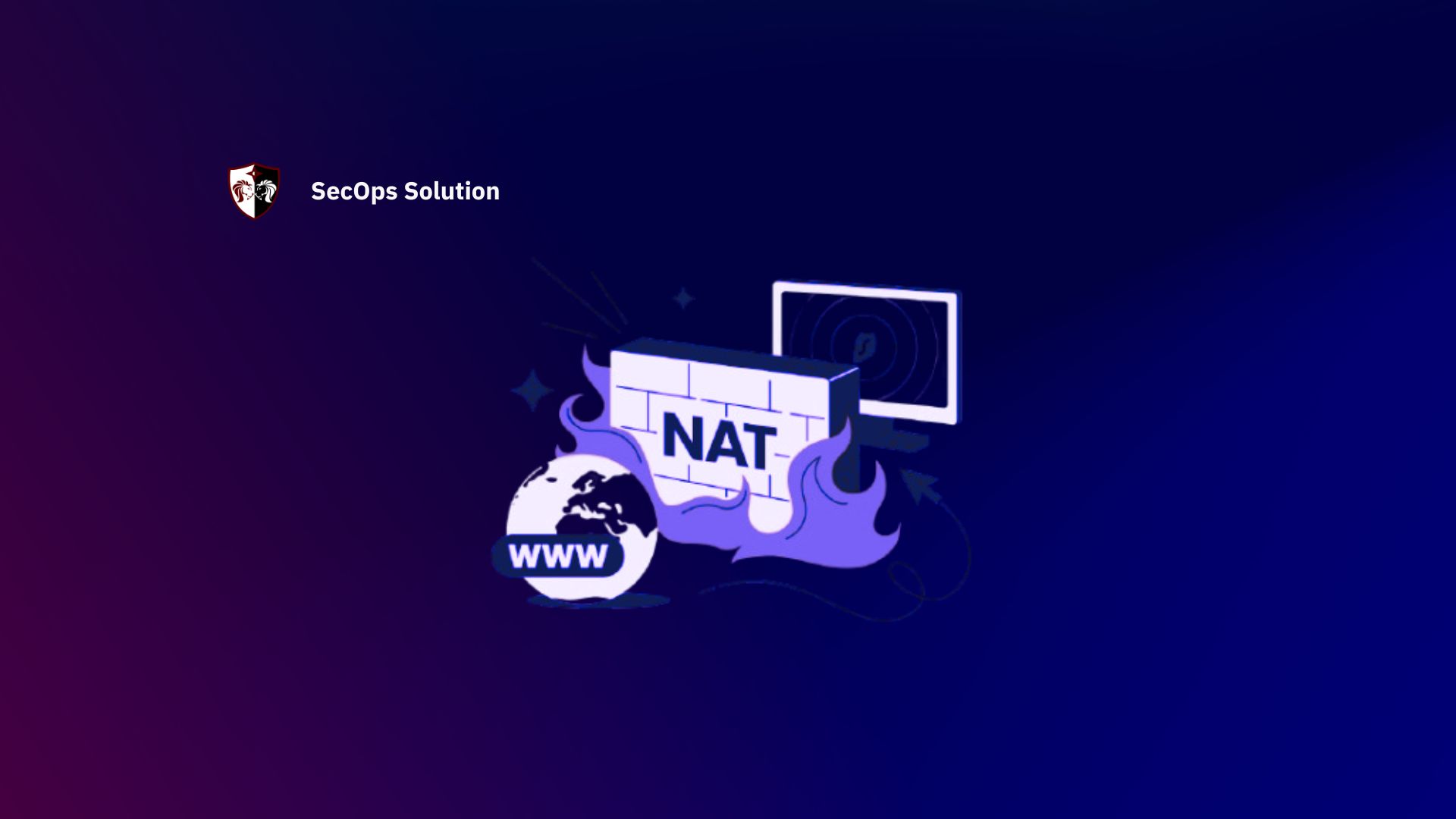Keeping devices up-to-date with security patches is one of the most critical steps in maintaining cybersecurity hygiene. However, when these devices are located behind firewalls or Network Address Translation (NAT) configurations, patching can become a challenge. These network security layers are essential for protecting assets, but they can also limit direct access from external patch management servers.
This blog explores the practical challenges, best practices, and modern solutions for patching devices behind firewalls and NAT — along with how SecOps Solution can help organizations streamline the process without sacrificing security.
Understanding the Challenge
What Happens Behind Firewalls & NAT
- Firewalls: Act as gatekeepers, controlling inbound and outbound traffic based on security rules. They can block remote patching attempts from external servers.
- NAT: Translates private IP addresses to public IP addresses, making multiple devices share a single public-facing IP. This adds complexity for patch managers trying to uniquely identify and connect to each device.
Why It’s Difficult to Patch in These Scenarios
- Blocked Inbound Connections – Firewalls often block direct incoming traffic from patch servers.
- Limited Visibility – NAT hides devices’ internal IPs, making them invisible to external patch management tools.
- Compliance Risks – Delayed patches can result in failing audits for standards like ISO 27001, PCI DSS, HIPAA, etc.
- Security Trade-offs – Opening too many firewall ports to allow patching increases the attack surface.
Approaches to Patching Devices Behind Firewalls & NAT
1. Outbound-Only Agent-Based Patching
Instead of relying on incoming connections, an agent installed on the endpoint can initiate outbound communication to the patch server.
- How It Works: The agent reaches out to the patch server via HTTPS, downloads updates, and applies them locally.
- Pros: Secure (uses outbound traffic), works well with NAT, scalable.
- Cons: Requires installing and maintaining agents on each endpoint.
2. VPN or Zero Trust Network Access (ZTNA)
A secure tunnel can be established between the patch server and the internal network.
- How It Works: Devices connect to the patch management system via a VPN or ZTNA gateway, bypassing firewall restrictions without exposing unnecessary ports.
- Pros: Secure encrypted connection, centralized control.
- Cons: VPN setup can be complex, may affect network performance.
3. Agentless Patching with Relay Servers
Relay or proxy servers inside the network fetch patches from the internet and distribute them to devices behind NAT/firewalls.
- How It Works:
- A patch relay server is placed inside the protected network.
- It connects outbound to the main patch server.
- Internal devices fetch updates from the relay over the local network.
- Pros: No need for agents on each device, minimizes internet traffic per device.
- Cons: Relay server needs to be maintained and kept secure.
4. Scheduled Port Whitelisting
Temporarily opening specific firewall ports for patch traffic during maintenance windows.
- Pros: Works without additional infrastructure.
- Cons: Risky if ports are left open, requires careful scheduling and monitoring.
5. Cloud-Based Patch Management Platforms
Many modern patching solutions operate via the cloud, where endpoints make outbound HTTPS requests to retrieve updates regardless of NAT or firewall configuration.
- Pros: Minimal network changes, global accessibility.
- Cons: Requires stable internet access, data privacy considerations.
Best Practices for Patching Behind Firewalls & NAT
- Prioritize Outbound Communication – Use patching tools that initiate connections from the endpoint side.
- Use Encrypted Channels (TLS/SSL) – Always secure patch delivery to avoid tampering.
- Deploy Internal Patch Caches – Reduce internet bandwidth usage and speed up updates.
- Test Before Wide Deployment – Apply patches in a test environment to avoid outages.
- Automate Where Possible – Manual patching is prone to delays and errors.
- Maintain Audit Trails – Keep logs of patch deployments for compliance and troubleshooting.
How SecOps Solution Helps
SecOps Solution provides next-generation patch management capabilities that work flawlessly even for devices behind firewalls and NAT.
- Agentless & Agent-Based Options – Depending on your network architecture, SecOps can operate without agents or use lightweight agents for specific cases.
- Outbound-First Design – No need to open inbound ports; devices initiate secure outbound connections.
- Patch Relay Support – Local patch distribution points ensure minimal internet load and faster deployment.
- Cross-Platform Coverage – Supports Windows, Linux, macOS, and third-party application patching.
- Compliance-Ready Reporting – Detailed logs for ISO 27001, PCI DSS, HIPAA, and other regulations.
- Zero Trust Integration – Ensures patching happens in a secure, authenticated, and encrypted environment.
By leveraging SecOps Solution, organizations can patch devices in distributed, firewall-protected, and NAT-heavy environments without disrupting security controls.
Conclusion
Patching devices behind firewalls and NAT doesn’t have to be a nightmare. By adopting outbound-initiated patching, internal relays, and secure remote access methods, IT teams can ensure timely updates without exposing critical systems.
SecOps Solution brings together automation, security, and flexibility — enabling IT teams to overcome these patching challenges while maintaining compliance and minimizing downtime.
SecOps Solution is a Full-stack Patch and Vulnerability Management Platform that helps organizations identify, prioritize, and remediate security vulnerabilities and misconfigurations in seconds.
To learn more, get in touch.


